The how to train a small dog post contains affiliate links. Learn more on my Affiliate Disclosure page.
Discover how to train a small dog to obey and become a well-mannered companion. Fret no more! I will reveal the secrets to successfully training a small dog in this article.
From potty training to obedience commands, we've got you covered. Whether you have a feisty Chihuahua or a playful Pomeranian, these techniques will make your life easier and create a harmonious relationship between you and your pint-sized pal.
So grab your treats and prepare to embark on an adventure in canine education!
Have you ever wondered how some people manage to have well-behaved small dogs while others seem determined to wreak havoc at every turn? It's not magic; it's all about proper training!
If you're tired of being pulled down the street by your excitable Jack Russell Terrier or constantly cleaning up after your mischievous Dachshund, read on. In this article, we will dive into training small dogs and discover effective methods for teaching them good manners and essential skills.
Say goodbye to chewed-up shoes and hello to a well-behaved companion that will make heads turn at the dog park!
Why How To Train A Small Dog
The how to train a small dog is not just about teaching them basic commands like sitting or staying, but it also plays an essential role in their overall development and well-being.
A well-trained small dog is more likely to be confident, obedient, and have good manners. Additionally, training allows you to build a stronger bond with your furry companion as you establish clear communication and trust.
One important aspect of training a small dog is socialization. It helps your pup to become comfortable in various environments and around other dogs or people.
Introducing your puppy to different situations early on will teach them how to behave appropriately and avoid fear or aggression later in life.
Another reason why training a small dog matters is safety. Small breeds are more vulnerable to accidents or dangers due to their size.
Training can teach them commands like leave it or come, which can be lifesaving in certain situations, such as avoiding toxic substances on the ground or preventing them from running into busy streets.
How to train a small dog is essential for personal growth, safety, and building a harmonious relationship with their owners. Taking the time and effort to train your puppy will result in an obedient and well-behaved companion that adds joy to your life while ensuring their happiness.
Understanding Small Dog Behavior
How to train a small dog also means you must understand your small dog breed's behavior and needs.
It's important to remember that these pint-sized pooches often have just as much personality as their larger counterparts. While they may be small, their energy levels can be surprisingly high. Therefore, daily exercise is necessary for their mental and physical well-being.
Ensure they have regular opportunities to burn off steam through walks, playtime, or even interactive toys.
Tiny dogs often crave companionship and can get easily attached to their human family members. They thrive on attention and are known for being quite affectionate.
t's important not to underestimate the impact of socialization on their development - exposing them to different people, animals, and environments can help prevent behavioral issues such as shyness or fearfulness.
Little dogs have specific grooming needs that require attention. Their tiny teeth are prone to dental problems if not cared for properly. Regular brushing prevents plaque buildup and maintains good oral hygiene.
You should pay attention to their nails - keeping them trimmed helps prevent discomfort or injury during walks or playtime.
By knowing your dog's unique behaviors and needs, you'll be better equipped to provide the required care and successfully train them using appropriate techniques tailored specifically for smaller breeds.
How To Train A Small Dog Basic Obedience
When it comes to how to train a small dog, like Chihuahua or Pomeranians, basic obedience training is essential. These pint-sized pups may be adorable but can also have big attitudes if not correctly trained.
Sit Command
"Sit" is an important obedience command for small dogs. It is the first and easiest training lesson to teach.
Teaching your furry companion how to sit on command is necessary and practical. It establishes a sense of control and helps prevent them from jumping up on people or getting too excited in certain situations.
To train your small dog to sit, hold a treat close to their nose while gently pushing down on their hindquarters until they naturally sit down. As soon as their bottom touches the ground, give them the treat and plenty of verbal praise.
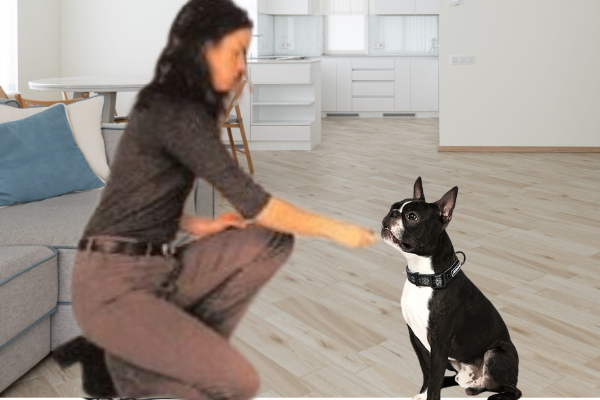
Come Command
One important aspect of obedience training is teaching your small dog to come when called. The "come" command can be handy in situations where you need your dog to quickly come back to you, such as when they've gotten loose or if there's an emergency.
Start by using a long leash and lots of praise and treats to encourage them to come towards you whenever you call their name.
Basic obedience training is vital for small dogs' well-being and safety, ensuring that they are well-behaved members of society. By teaching commands such as recall and sit, owners can establish control over their tiny companions in various situations.
How to train a small dog can be taught with patience, consistency, and plenty of positive reinforcement through treats and praises. You can train any small dog can be trained become a well-mannered canine companion.
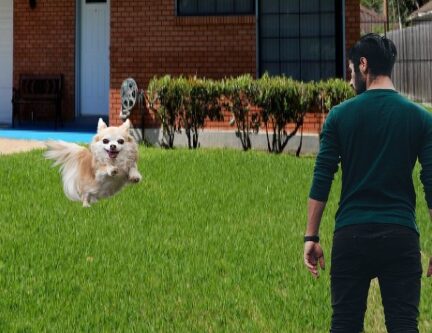
Down Command
Training a small dog can be a fun and rewarding experience, especially when teaching them the down command. How to train a small dog: the "down" command helps control their behavior but also helps keep them safe in various situations.
To teach your small dog the down command, start by capturing their natural behavior of lying down and reward it immediately with praise or treats. Once they understand this concept, gradually introduce the verbal cue down while they are in a relaxed state.
When training your small dog to lie down on command, it's important to remember that consistency is key. Practice this command frequently throughout the day, incorporating it into different daily routines, such as before mealtime or after a walk.
Be patient and avoid using physical force or punishment during training, as it may hinder your progress. Instead, focus on positive reinforcement techniques and use high-value rewards to motivate your small dog.
As you work on training your small dog the down command, keep in mind that every dog learns at their own pace. Some dogs may pick up this command quickly, while others might require more time and repetition.
Remember to always end each training session on a positive note by praising your pup for their efforts, even if they haven't fully mastered the command yet.
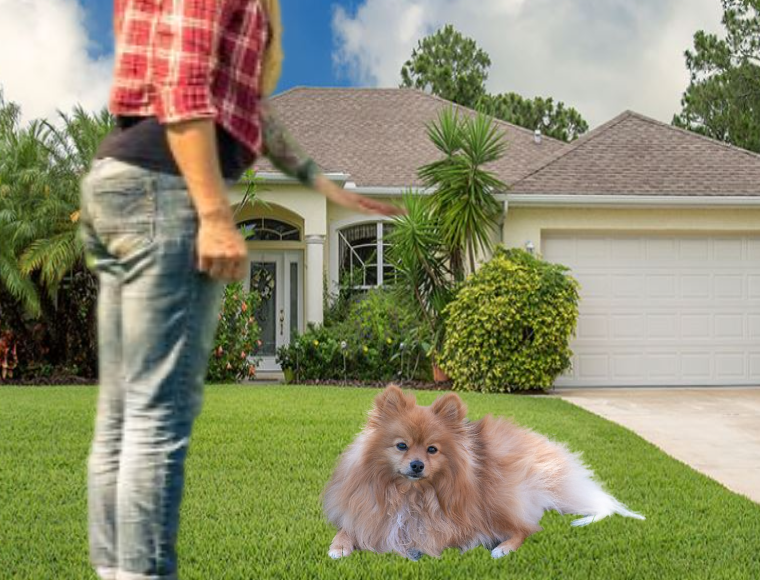
Stay Command
Training a small dog can sometimes feel like an uphill battle, especially when teaching them the "stay" command. However, with patience and consistency, you can successfully train your furry friend to master this important skill.
- One effective approach is to start by using positive reinforcement techniques such as treats or praise whenever your dog stays in place for a short period.
- Gradually increase the duration before giving rewards, and make sure to use a release word like okay or free to let your dog know they can move again.
- Practice the stay command in different situations and environments.
Changing locations will help your small dog learn that they need to stay no matter where they are or what distractions may be present. For example, you can start practicing in a quiet room at home before gradually moving to more distracting environments like parks or busy streets.
Remember to keep training sessions short and fun so your dog remains engaged and eager to learn.
In addition, it's crucial not to punish or scold your small dog if they don't immediately grasp the concept of staying still. Instead, focus on reinforcing positive behaviors through rewards and always end each training session on a positive note, even if progress is slow.
With time and consistency, your small dog will develop confidence in their ability to stay and follow this command reliably.
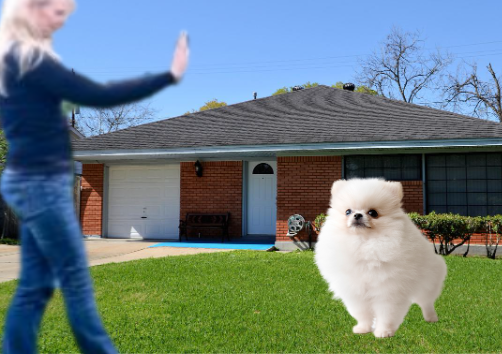
Drop-it Command
The drop-it command is an essential skill for small dog owners to teach their furry companions. Not only does it help prevent them from harm, but it also promotes good manners and obedience.
Training a small dog to master the drop-it command requires patience, consistency, and positive reinforcement.
Firstly, start by selecting a desirable toy or treat that your small dog wants to play with or eat. Hold the item tightly and allow your furry friend to investigate it with their nose and paws.
Once they show interest in the item, say, drop-it in a firm yet gentle tone while offering a high-value treat as a reward. Your four-legged friend will soon learn that dropping the object leads to something even better.
It's crucial to reinforce the drop-it command during everyday activities like playing fetch or chewing on toys. Whenever your small dog drops an item willingly, praise them enthusiastically and offer plenty of verbal affirmation along with treats.
This consistent practice reinforces the behavior positively, ultimately creating a strong association between dropping items on cue and receiving rewards.
Training sessions should be short (around 5-10 minutes) yet frequent throughout the day for effective learning without overwhelming your furry friend.
By teaching your small dog the drop-it command through positive reinforcement techniques, you are setting them up for success in various situations throughout their life.
It can prevent dangerous ingestions during walks and outdoor adventures while fostering polite behavior when interacting with other dogs or humans. With consistent training, patience, and plenty of rewards, you
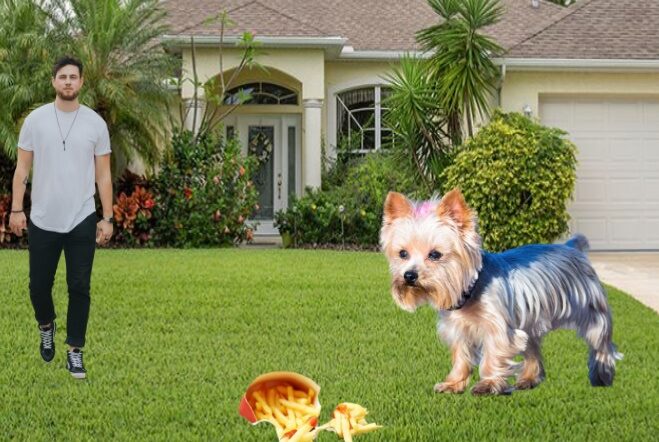
Make How To Train A Small Dog Fun
"To create a positive training experience for your puppy, try incorporating fun activities and end each session on a positive note."
How to train a small dog learning sessions can sometimes feel monotonous, especially for small dogs with short attention spans. However, by making each session fun and ending on a happy note, you can ensure that your furry friend remains engaged and eager to learn.
One way to make training enjoyable is to incorporate games into the session. For example, you could play a round of fetch as a reward for successfully following commands like sit or stay.
Fun game-playing provides mental stimulation for your pup and strengthens the bond between the two of you.
A good strategy is to keep the atmosphere light and positive throughout the session. Use a cheerful tone of voice and lots of praise when your puppy accomplishes a task correctly.
Engage in playful interactions during breaks, such as rolling around on the floor or cuddling together. Your puppy will develop an innate enthusiasm for learning new skills by associating training time with happiness and affection.
Remember that it's crucial to end each session on a high note. Finish with a simple command your puppy has mastered, ensuring it succeeds quickly before offering plenty of praise and treats.
Positive reinforcement ultimately makes them feel accomplished and motivated for future sessions. Celebrating their success will boost their confidence and create anticipation and excitement about their next training experience.
Fetch Dog Game Toys
After a successful training session with your small dog, it's time to let them release some pent-up energy and have some fun. One of the best ways to do this is by incorporating fetch game toys into their routine.
Not only does fetch provide mental and physical stimulation for your furry friend, but it also reinforces the training exercises you just completed.
Fetching is an excellent way to reinforce commands such as staying and returning while improving their obedience skills. It allows you to practice recall in a controlled environment, reinforcing that they should obey when you command them to return.
Playing fetch after training sessions also helps relieve any leftover stress or frustration from the more challenging parts of the session, leaving your pup feeling satisfied and accomplished.
Moreover, fetch isn't just beneficial for small dogs; dogs of all sizes can enjoy it! If you're working on socialization during training sessions, playing fetch in a dog park or other public area can help your small dog become more comfortable around larger breeds.
This exposure can significantly contribute to their behavior toward other dogs and humans.
Incorporating fetch games as a reward after a productive training session provides enjoyment and reinforces positive behaviors while maintaining an energetic atmosphere.
So grab a ball or favorite toy and get ready for high-flying fun with your well-trained small pup!
Tug-of-war Toys
Playing tug-of-war with your small dog can be a fun and engaging way to bond, but it is important to establish some ground rules.
- Firstly, always have a designated toy for tug-of-war, so your pup knows when it's playtime. A tug-of-war toy will prevent them from thinking that any item is fair game for tugging.
- Secondly, teach your dog the "drop-it command" to ensure they let go of the toy when asked. Also, it will help maintain control during the game and avoid any potential accidents.
When playing tug-of-war, be mindful of controlling the intensity. While small dogs may seem delicate, they are often aggressive players! Maintain a balance between gentle tugging and giving in once in a while to let them feel triumphant.
Remember that this game should be fun for you and your furry friend!
- Lastly, take into account the power of rewards during training sessions.
After a successful round of tug-of-war where your dog listens to commands and demonstrates good behavior, reward them with praise or even a tasty treat as positive reinforcement.
By incorporating playtime into training, you can make learning enjoyable for your small canine companion!
K9 Training Institute Free Workshop
The K9 Training Institute offers a free workshop where you can learn firsthand their effective training methods.
The Free Workshop emphasizes building a solid bond between you and your pup. They explain how to apply positive reinforcement techniques that make learning enjoyable for dogs and their owners.
Does your dog tug on its leash, bark constantly, and won't come when called? Sign Up and get the FREE Obedience Training Workshop Now!
Tips For Housebreaking A Small Dog
Consistency is one of the most important things to remember when housebreaking a small dog.
How to train a small dog: first, you must establish a routine. Ensure your dog goes outside at the exact times every day and reward them with praise or treats when it pees and poops in the right spot.
It's also important to pay attention to their body language – small dogs often start sniffing around or circling before they need to go out, so be vigilant and act quickly.
A helpful tip is to create a designated potty area for your small dog. You can choose an outdoor space or even a specific spot with puppy pads or newspapers inside your home.
By consistently using this area, you can train your dog where it's appropriate for them to relieve themselves.
Remember that accidents may happen, especially during training, so be patient and promptly clean up any messes using an enzymatic cleaner that will remove odors completely.
Finally, consider crate training as part of your housebreaking strategy for a small dog. Dogs naturally try to avoid eliminating where they sleep, so crate training can aid in preventing accidents indoors while teaching your dog bladder control in a safe environment.
However, it's essential not to leave your small pup confined for long periods without bathroom breaks, as they have smaller bladders and more frequent needs than bigger dogs.
Keep these tips in mind while housebreaking your small dog - consistency, creating a designated potty area, and utilizing crate training as part of the process – and soon enough, you'll have a well.
How To Train A Small Dog Using A Crate
Training a small dog to use a crate can be an essential and effective tool for their safety and your peace of mind.
First, choosing the right size crate for your small dog is important. If the crate is too big, your dog may feel overwhelmed or have accidents inside. Conversely, they will need more space to stretch out comfortably if it's too small. Finding the perfect fit will help create a positive association with the crate.
Once you have the appropriate crate size, introduce it gradually to your small dog. Start by placing treats or their favorite toys near the crate's entrance, allowing them to approach and explore at their own pace without feeling pressured.
Over time, gradually move these incentives further inside until they go all the way into the crate willingly. Positive reinforcement is crucial during this process - praise and reward them whenever they interact with or enter the crate voluntarily.
Next, focus on creating a cozy and inviting environment within the crate itself. Use soft bedding that smells like its familiar surroundings, such as an old t-shirt or blanket that carries your scent.
A comfortable object will make them feel more comfortable and secure when spending time in their new den-like space.
Consistency is key when training any dog, regardless of size – so maintain a regular routine around using the crate throughout each day until it becomes a natural part of their routine.
By following these steps patiently and consistently, you'll soon find that your small dog happily goes into their crate on command.
Socializing Your Small Dog
Socializing how to train a small dog to meet other animals and people successfully is essential to their training.
It helps them develop proper behavior and ensures they are comfortable in various social settings. Interaction with different animals allows your furry friend to understand appropriate behavior cues, body language, and boundaries.
Encountering a variety of individuals helps your small dog build confidence and trust in humans.
To successfully socialize your small dog, introduce them to well-behaved dogs or animals you know are friendly and calm. This way, you can control the environment and ensure positive experiences early on.
Gradually increase the difficulty level by exposing them to more challenging situations, such as meeting unfamiliar animals or attending group obedience classes.
Provide plenty of rewards and praise when they exhibit desired behaviors during these encounters.
Exposing your small dog to different people from a young age also helps prevent fear-based aggression and anxiety issues later in life. Invite friends over or take them for walks in public places where they can meet new faces regularly.
Encouraging gentle interaction with calm strangers will help build their confidence and teach them how to properly approach others without becoming overly excited or fearful.
Addressing Common Behavior Issues
Addressing Common Behavior Issues in Small Dogs can be challenging, but with the right strategies and patience, it is possible to overcome these obstacles.
Separation anxiety is prevalent among small dogs, often leading to destructive behaviors when left alone.
To combat this problem, gradually acclimating your dog to periods of separation can help alleviate their anxiety. Start by leaving them for short intervals and gradually increase the time as they become more comfortable being alone.
Excessive barking is another behavior issue commonly found in small dogs. While barking is natural for dogs to communicate, excessive or incessant barking can be disruptive and frustrating for both you and your neighbors.
Understanding why your dog barks excessively is key to addressing this behavior effectively. It could be due to boredom, fear, or even seeking attention.
Identifying the root cause will enable you to tackle the problem head-on by redirecting their focus or providing mental stimulation through interactive toys or puzzles.
It's important to remember that every small dog has its own unique personality and learning style. What works for one may not work for another, so finding the right approach may require some trial and error.
Remaining consistent with training techniques and positive reinforcement will go a long way in helping your small dog overcome these common behavior issues.
With time, patience, and dedication on both your part and theirs, you can create a happy and well-behaved companion who brings joy into your life every day.



